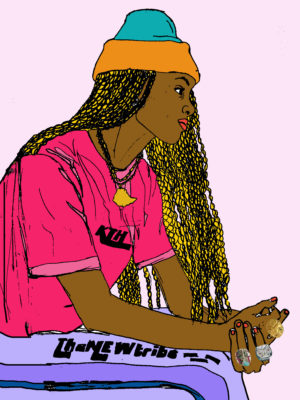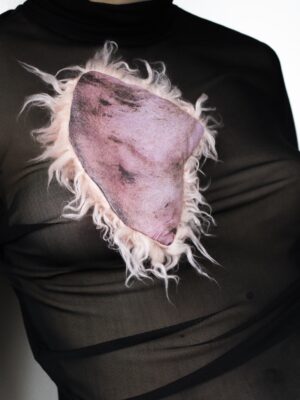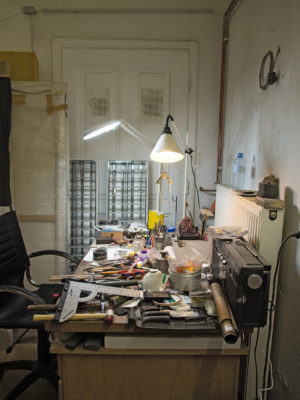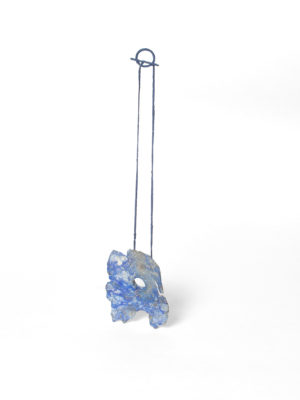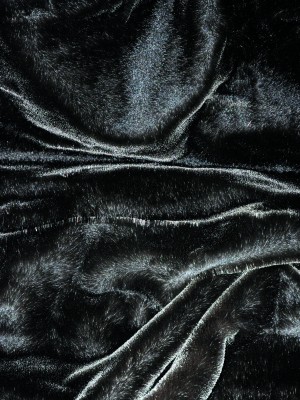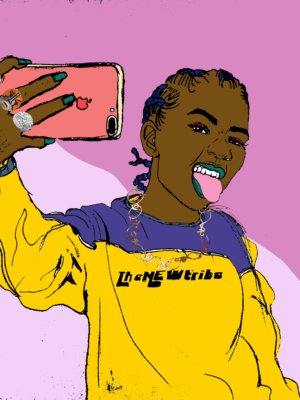
Veronika Muráriková
Firstly, I want to know about Kalkidan Hoex as a person. How do people recognize you, and what defines you?
Kalkidan Hoex
Hmm, I can say a lot about that. Somehow, I am just very much there. Like, people always see me and remember me. That could be because I am always so colourful. I just love colour! Maybe it has something to do with my background or my legacy. When I listen to music, I see its colours; I like to work with them, to combine them. And I think that’s why people always see me. I am also very social, which is my way of doing research or finding out about things. I go places. I talk to people. If I find someone interesting, I’ll ask them questions… I’m definitely not shy! Sometimes you might feel that there is some kind of hierarchy and you can´t talk to people, but why not? First of all – I am doing this for me, not for somebody else.
Does your work help you to develop your personality?
Yeah, it actually does; it is a big part of finding out who I am. Identity was an important topic in my graduation work last year – TheNEWtribe.
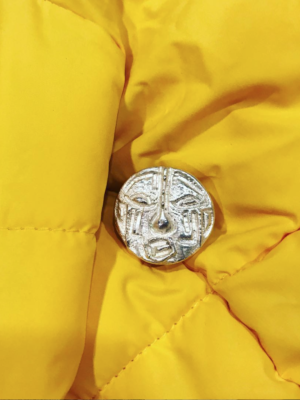
Can you tell me a little bit about it?
Yes, let´s just say I struggled with finding my identity within my own work at the beginning; I just didn´t know where to start. There was this feeling of a missing part in the work and within my personality. I started developing myself through the Academy a bit, but it was my graduation year when I became TheNEWtribe. I found out a lot, including that my way of working relates to where I come from – Ethiopia. I was adopted when I was almost two years old, and in fact I grew up here in the Netherlands.
I guess you don’t have any specific memories from Ethiopia then?
I have no memories; it is completely blank.
So, jewellery has become like a tool for you – something you can use to help you find out more about your origins?
I think jewellery is a tool for finding out who I am, but also for creating a new subculture, one that represents the two worlds through different jewellery pieces. I mean, it doesn’t have to be super literal, like, ‘Hey, this is a super African artist,’ or something like that. It is just there. I could do pretty much anything and it would just be there; but in order to make this stronger or more clear I have been researching this theme for my master’s studies – to make it even brighter and to give it a deeper meaning.
So yeah, that is how TheNEWtribe started last year, and I realised that also my work is very social. It speaks to you in many ways. Sometimes I like to use texts in my illustrations, but I think in the future I will also use text in my jewellery pieces, if it fits.
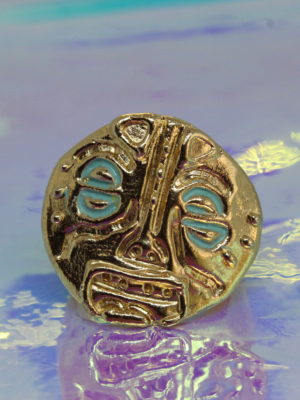
Yes, I have noticed that in design in general the use of typography and language is becoming very popular. And that is what I like about your work, too: that you are actually not afraid of using various media. How did you come to combine jewellery with graphic design?
I think it was always there, because I was making illustrations long before I started to do jewellery, and it’s funny, because they first thought I was perfect for graphic design. And I was very persistent about going for jewellery.
Was it because of a need to create something with your hands? To make 3D objects?
I very much have this need to create physical objects, but it’s not just that. I also make videos and animations from my illustrations, with graphics, letters and words that refer to a lot of things. So I can’t really say that I am just a jewellery artist; I do so much other work as well.
While studying, you also did some internships – with Oräik and Göran Kling, for example. From my own experience, I know that this sort of thing has the potential to have a huge influence on one’s work. How was it for you, and how did you get this opportunity?
Actually, I’ve known and followed Göran Kling for quite some time, and there was once this opening of the Cult exhibition by Current Obsession at the Design Museum Den Bosch. So I was there, completely ready to send him a message that I wanted to do an internship with him after having seen his work again. I was in Stockholm for two months and I helped in his studio. It was great. Personalitywise, he is a really nice guy, and he also taught me a lot. He was willing to help me if I wanted to try things out. So, in conclusion, it was a very relaxed internship. He obviously does things in a different way; he relates pretty much to the 90s and brings that up in a very fresh and cool way in his jewellery pieces. But his way of thinking… I mean he has a community behind him in Stockholm and all of them are like street art people, they are freaking great. Meeting them was extremely interesting because, obviously, we both work a lot with Instagram. I was already doing it by that time, but it was not on the same level as it is now. And he advised me on how to develop it even more, to find and create the community that fits me. Together with his lifestyle, it was like a complete picture.
Yes, that is true: Instagram is a very powerful tool nowadays. So have you figured out yet who your audience is?
Well, it is mostly the younger generation, and I am also focused on people who have two identities – people who have been adopted, like me, or who came here with their families – and who can read my jewellery, who can see the resemblance when it comes to my illustrations as well. Even if we are speaking about different backgrounds, it all relates in the same way. We can somehow understand each other. So I guess these people are my audience…
When did you realize this?
[At school], I was the kind of girl who straightened her hair, dressed mainly in black, a little bit of colour but not much, and I was like this for almost two years. And then my teacher was kind of sick of it. She used to say that I was not myself. It annoyed her. I remember that once I came to school with my curly hair, because I was late and about to miss my lessons, and everyone was saying that it looked so cool, but I didn’t really believe them, and the first thing the professor said to me was, ‘WHAT? You have curly hair?! Does this mean you have been straightening your hair all this time?’ I said, ‘Yes,’ and she told me not to do that ever again, and in that moment something switched in my head. I understood that I could be myself, which was the best decision ever because new people also came into my life, I finally let them.
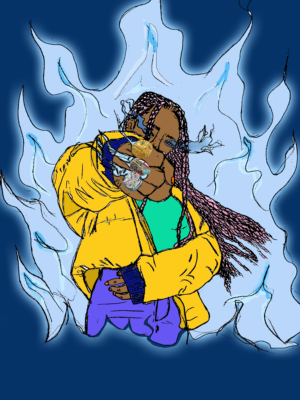
You mentioned that you are working on a comic book right now. Do you have any particular stories that you want to depict in this comic book?
Yes, I have some of the stories already ready. I am huge fan of Marvell – it’s great. I like the way they build up their stories and how they draw, how it speaks immediately, it is always linked somehow. So I want to use that kind of approach. Even the jewellery, I would like to make it special because it is going to be translated from the comic book. So it is not about buying the jewellery piece anymore, you can just buy a comic book and if you want to buy the piece with it, you can. I also see it as giving a new value or fantasy to the jewellery. In the book you will find out that the pieces have superpowers, and then you can also have them or feel them.
In Ethiopia, there are a lot of tribes who have objects that have certain meanings, and they really believe these object will protect them or can give them some powers. And that is the moment that you can bring alive in the comic book.
What materials do you like to work with?
First of all, I use materials that are quick to work with. The same also applies to the way I work. I look for quick solutions. Even finding objects is crucial; I see elements in them that fascinate me and that I try to remake. But I work with everything from aluminium, to silver, to… basically anything.
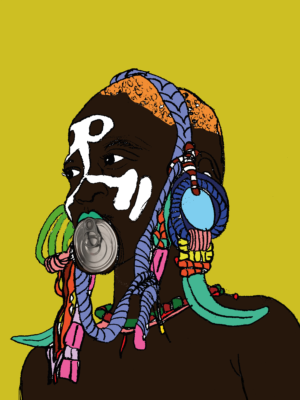
And what about your plans for the future?
We [the MAFAD master’s students] are going to be at Munich Jewellery Week. I would also like to go to OBSESSED!, and maybe there will be another popup in between, it is not clear yet. I have already done some popups before. I usually take posters and nice stands and literally pop up somewhere in a museum, shop, or wherever it fits – so people can join us, maybe there is some music or other artists… Why does it always have to be a gallery or a nice space? Who says it can’t be a random place, close to new people, so they can just come in and be introduced to what is hanging there? You can create a specific vibe or atmosphere in this way. Just step out of your world!
This article was first published in the #5 Current Obsession Paper for Munich Jewellery Week
___STEADY_PAYWALL___
